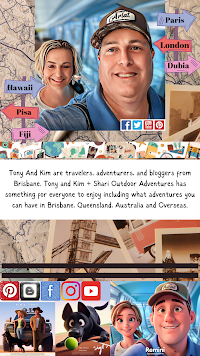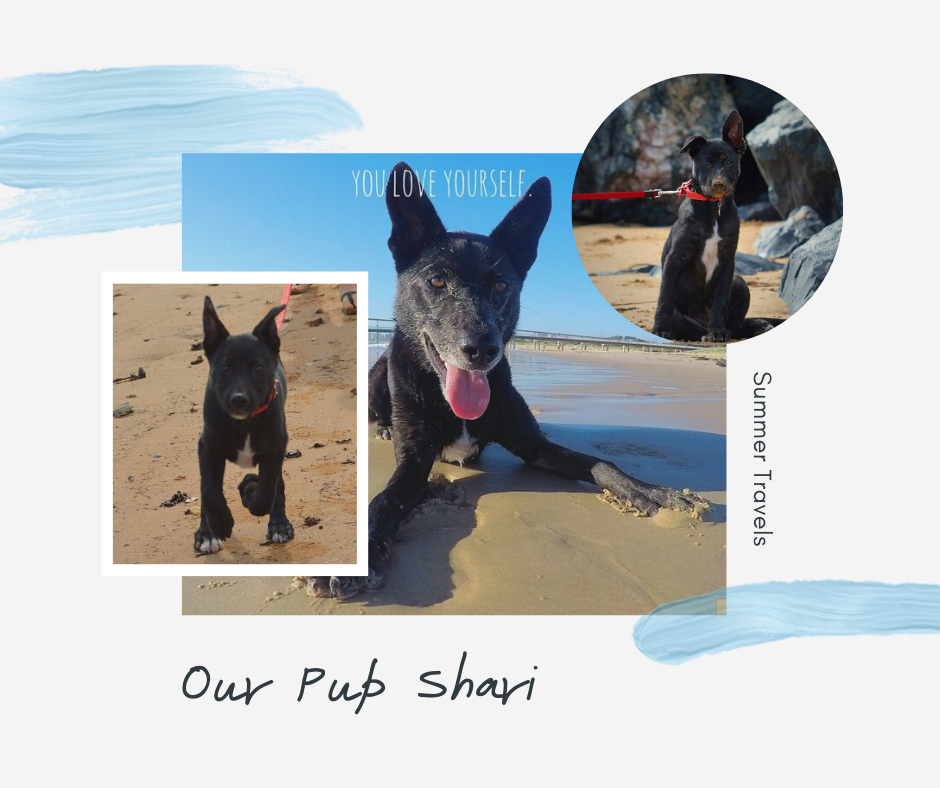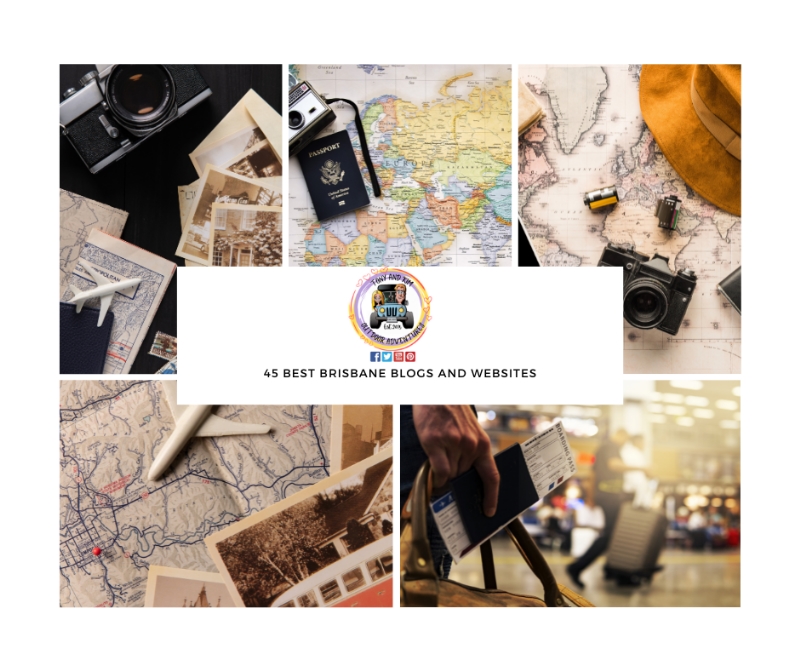Canberra is a city that’s often skipped by people who visit Australia. I think it’s not wrong to assume that some people don’t even know that Canberra exists, focused as they are on Sydney, Melbourne or the golden beaches of the east coast. People who do visit Canberra, however, are usually surprised by the amount of landmarks, monuments and museums in the city. Just like the vast majority of capital cities in the world, Canberra is home to the country’s national museums and parliament. Though unlike most capital cities, Canberra is a completely artificial city, in the sense that everything in it was planned. Canberra was designed in 1912 by the architect Walter Burley Griffin who pictured it as a garden city that would be able to house about 25,000 people. Nowadays, it is home to many gardens, a huge artificial lake (Lake Burley Griffin) and tree-lined avenues; its population has grown to 300,000.
We stayed at Alivio Tourist Park, in one of their villas. They were only 4kms from the Canberra Centre, surrounded by bushland with great facilities and a great Café and Bar. In hindsight I would stay in the CBD next time around. We didn’t do much because we arrived late afternoon and decided to chill by the pool and read up on what to do for the week.
Next day arrived and our first stop for the day was a tour of the Australian Institute Of Sport. We were really looking forward to the AIS and it didn’t disappoint.
When we toured the complex we were fortunate enough to see some professional athletes training. There were 7ft volleyballers practicing their spiking, swimmers doing laps (including Olympic gold medalist Alicia Coutts), the U18 Soccer team were stretching in the gym and the Australian men’s Gymnastics team were doing a mock competition. Our experience was rounded off with a session in ‘Sportex’, a hands on interactive room loaded with sports memorabilia and activities.

The next day after breakfast we jumped on a bus and strolled through suburban Canberra until we reached the Australian War Memorial. The walk took about 30 minutes. It was very interesting walking along the wide tree-lined roads with their one storey houses. The one thing that was really irritating though, was that a lot of the streets either had no pavements at all or just one on the one side. This really is a city for the car (not very green). Everything is really spread out and you can't walk from one thing to another easily (no pavements and long distances). Anyway, we made it to our destination.
The Australian War Memorial is Australia's national memorial to the members of all its armed forces and supporting organizations who have died or participated in the wars of the Commonwealth of Australia. The memorial includes an extensive national military museum so it is more like a cross between the Imperial War Museum and the Cenotaph. The Australian War Memorial was opened in 1941, and is widely regarded as one of the most significant memorials of its type in the world.

The Memorial is located at the northern terminus of the city's ceremonial land axis, which stretches from Parliament House on Capital Hill along a line passing through the summit of the cone-shaped Mount Ainslie to the northeast. No continuous roadway links the two points, but there is a clear line of sight from the front balcony of Parliament House to the War Memorial, and from the front steps of the War Memorial back to Parliament House. We took some photographs from this end, having already photographed the War Memorial from the other end yesterday.

The Australian War Memorial consists of three parts: the Commemorative Area (shrine) including the Hall of Memory with the Tomb of the Unknown Australian Soldier, the Memorial's galleries (museum) and Research Centre (records). The Memorial also has an outdoor Sculpture Garden. We made our way through the sculpture garden taking some photographs on the way. Kim’s favourite was the Simpson & his donkey Sculpture. John Simpson Kirkpatrick enlisted in the 3rd Australian Field Ambulance as Private Simpson on 25th August 1914. He took part in the landing on Gallipoli on 25th April 1915 and became famous among Australian troops for his bravery and compassion. Under continual shell fire he used a donkey to carry water up Shrapnel Gully, and to bring wounded men down to the beach on Anzac Cove from the firing line on the ridges above. After less than 4 weeks in action he was fatally wounded on 19th May 1915. Although he was known on Gallipoli by a variety of nicknames, most of the soldiers who witnessed his bravery knew him as the man with the donkey, without ever learning his name. Simpson has come to embody for Australians the spirit of self sacrifice in war.

The other statue which particularly caught our eye was by Ray Ewers. In 1954 he was asked to create a sculpture to commemorate the sacrifice of Australians in all wars. 'Australian Serviceman' symbolizes determination, courage and a spirit of achievement as well as hope for the future. It was unveiled in 1959 in the Hall of Memory and removed to the Sculpture garden in 1993 to make way for the construction of the Tomb of the Unknown Australian Soldier. Around the side, next to the administration building there was an interesting collection of Australian war memorabilia including the barrel from the Amiens Railway Gun, the gun mount and bridge from HMAS Brisbane and a Centurion Tank. Outside the memorial there was also a naval gun from HMAS Australia.
We entered the main building passing by the Menin Gate Lions. These medieval stone lions once stood on either side of the Menin Gate in the walls of the town of Ypres in Belgium. Ypres was destroyed in the war, and these lions were recovered from the ruins of the Menin Gate. During the First World War, Allied soldiers passed through the gate to the battlefields around Ypres, where over 38,000 Australian troops were killed or wounded. The gate became the site of a memorial to the soldiers of the British Empire, including over 6,000 Australians who were killed around Ypres and have no known graves. In 1936 the Burgomaster of Ypres presented the lions to the Australian Government as a gesture of friendship between that town and the people of Australia. They commemorate the service of the Australian soldiers who helped to defend Ypres in 1917.

Once inside we found we were just in time for a free guided tour. First we went outside to the commemorative area which is situated in the open centre of the memorial building. We entered a narrow courtyard with a memorial pool surrounding an eternal flame and flanked by sidewalks and shrubbery, including plantings of rosemary for remembrance. Our guide took us up to the cloisters where we had a great view down to the two Parliament Buildings. In the cloisters is the Roll of Honour, a series of bronze plaques naming the 102,000 Australian servicemen and women killed in conflict. The plaques include names dating back to the British Sudanese Expedition, the Second Boer War, and the Boxer Rebellion. The entire long wall of the western gallery is covered with the names of the thousands who died in World War I. The eastern gallery is covered with the names of those who died in World War II and more recent conflicts. The roll shows the names only, not rank or other awards, as "all men are equal in death". Visiting relatives and friends insert poppies in the cracks between the bronze plaques, beside the names of their loved ones that they wish to honour; many continue to be inserted by the names of those who died in World War I, and a few even appear by the names of those who died in the 19th century campaigns. We walked past the names of those who perished in the First World War. Many of the names are marked with poppys which can be purchased from the shop. Members of staff carefully replace any poppys which have fallen to the ground. I spotted a few names from research our family history on the plaques.
We continued on to the heart of the commemorative area which is the Hall of Memory, a tall domed chapel with a small floor plan in the form of an octagon. The walls are lined with tiny mosaic tiles from the floor to the dome. Inside lies the Tomb of the Unknown Australian Soldier. The remains that are interred here were brought back from one of the graves in a European Cemetry marked "Known Only to God". Three of the walls, facing east, west, and south, feature stained glass designs representing qualities of Australian servicemen and women. At the four walls facing northeast, northwest, southeast, and southwest are mosaic images of a Sailor, a Servicewoman, a Soldier and an Airman, respectively. The mosaic and stained glass were the work of the one-armed Australian muralist Napier Waller, who had lost his right arm at Bullecourt during World War I and learned to write and create his works with his left arm. He completed his work in 1958.
We moved on inside the building which changed from an area of remembrance to a museum with exhibitions from various conflicts in which the Australian forces were involved. Unfortunately the World War 1 exhibit was being re-done so we couldn't see it and all the stuff associated with the disaster at Gallipoli. We were guided around all the Second World War stuff, with aircraft and sound and light shows. We had a late lunch and then went back and looked again at some areas and returned late for a swim and barbeque dinner.

The next day we woke for a long day of touring. We got picked up from our accommodation in a private car and we began the day with a trip to Mount Ainslie to view the city and learn the history and planning by Walter Burley Griffin. Rising up behind the Australian War Memorial in Canberra is Mount Ainslie. At its peak, Mount Ainslie Lookout offers a beautiful view of the Nation's Capital from above. Canberra's layout has been planned from the very beginning, and as you cast your eyes out over the landscape you'll see how everything fits together in the city's unique design.
Next on the agenda was the Australian War Memorial. We bypassed this because we did it yesterday and gave us a chance to spend more time elsewhere.
We then took a drive down Anzac Parade and over Commonwealth Bridge, past the The National Library, Questacon and along Commonwealth Place. We then arrived and toured the Old Parliament House, (now known as The Museum of Australian Democracy) to view the past Prime Ministers office and other areas of this historic building, then up Federation Mall for a one-hour tour of Parliament House.
Parliamentary was sitting, so we got to bypass the massive line and head in and see Question time from the speaker's gallery, then toured The Great Hall, Marble Foyer, and onto the Senate which was also sitting at the time. We both really enjoyed the experience.
We then visited the National Museum of Australia, for one hour and saw some of the nation's interesting exhibits, and marvel at the buildings very unusual architecture. Back home late we decided to check out the greyhound track down the end of the street. We only stayed for a few races because Kim got in trouble with a local trainer by whistling to the greyhounds as they walked past to go in the boxes. She was more interested in patting and playing with them.
The next day we spent a day at the races.
The day after that we had a great time with the private tour of Canberra, we decided to do another one. This time it was a local wine tour.
We took an easy 20 minute drive north of the Canberra’s city centre, to the quaint historic village of Hall. Among the hills of Hall you can find boutique vineyards and winery cellar doors, historical buildings and cottages dotted across the countryside, as well as the Memorial Avenue of Trees and vibrant Sunday markets. We spent the day exploring the wineries scattered throughout the Hills of Hall.
1st stop was Brindabella Hills Winery, named after the spectacular Brindabella Range, which provides the mountain backdrop of Canberra, Brindabella Hills Winery is perfectly positioned on a ridge above the Murrumbidgee. Taking cues from regions around the world with similar climates, Roger and Faye Harris planted their vines in 1986. Now, with winemaker Brian Sinclair at the helm, they produce seven types of wine including Pinot Gris, Sangiovese and Shiraz.

On the road again the next stop was Pankhurst Wines. It may be tucked away, but it’s definitely worth seeking out this little slice of heaven. Run by Allan and Christine Pankhurst, you’ll find a delicious selection of classic Canberra District varieties and local favourites such as Sparkling Cabernet and the Box Tree Red, which blends Sangiovese, Tempranillo and Cabernet for an easy-drinking table wine. Stock up on chutney, sauces and sparkling juices made by the Pankhursts from their grapes or take a seat on the barrel furniture under the trees and enjoy a picnic.

Next stop on the agenda was a stop at Surveyor’s Hill Vineyards. With 25 acres of vines on a 225 acre property, viticulturist Leigh Hobba grows all the grapes that go into the 11 varieties of wine, including the popular Autumn Gold, a low-alcohol, sweet drop made from late-harvest Sauvignon Blanc and Semillon grapes. There’s also a range of seasonal produce for sale, including fresh eggs and preserves made from the property’s orchard and olives. If you’re feeling spritely you can take a stroll to the top of Surveyor’s Hill, which was once a volcano.
Next stop was one of Murrumbateman's premium cool climate family owned wineries and sample from our Estate Range of wines, whilst browsing our exquisite range of hand-made and hand-painted ceramics, exclusively sourced from Italy. We unwinded over a glass of wine and treated ourselves to a delicious meal at Flint at Shaw Vineyard whilst gazing over the vineyard.
Last stop on the tour was Mount Majura Vineyard, which is a dynamic boutique winery and vineyard. Their cellar door features a unique seated tasting allowing an interactive yet relaxing tasting experience. Mount Majura is a leader in the Canberra District for Spanish varieties such as Tempranillo. Their single vineyard site of red clay loam soils containing limestone also produces quality Riesling, Pinot Gris, Chardonnay, Pinot Noir, Graciano, a Cabernet Blend and Shiraz.
The next day we were lucky to be waking up on a Saturday and decided to head to the Bus Depo Markets, then onto the Gorman House Markets. It was a short stroll north of the city, at the city’s arts centre. We spent a couple of hours or so at the markets and we got to see a different side of the city to the politicians and public servants Canberra is known for. Kim browsed at great vintage clothes, antiques, crafts, second-hand books and all kinds of food stalls.

We then headed back to the main CBD. At first glance Canberra looks to have been paved solid with chain stores and malls, but a few alternative places have stayed alive in the cracks. Landspeed Records, in Garema Place, does a great line in indie music and sells some vintage clothing on the side. Cowboys & Angels, in Bunda Street, has local and international designers and definitely specializes in quirky. At Craft ACT, near the Canberra Theatre, we saw exhibitions from jewelers, ceramicists and textile artists, with many selling pieces through the centre’s shop, while Mooble, in Bailey’s Arcade, has natural, ethical and organic products, including a damn fine organic gin and hemp clothing that won’t make you look like a hippie.


We had dinner in Dickson, Canberra’s Chinatown to the north of the city. There are plenty of restaurants to choose from, but only a fool would go anywhere but the Dickson Asian Noodle House. I tried the laksa (a spicy Malaysian coconut milk and noodle soup). We still had some energy, so we slumped into a couch at nearby Trinity and down a Szechuan beekeeper cocktail for dessert.
Some other highlights were:
Canberra Zoo
Australia's only combined zoo and aquarium. The National Aquarium displayed a wide range of marine life, from the tiny denizens of the reefs to huge sharks. In the neighboring zoo, we can viewed all the important species of Australian fauna as well as exotic species as such as lions, tigers, cheetahs, bears, and more. We did the animal encounter are which allowed us to go behind the scenes and interact with cheetah, giraffes, sun bears, and red pandas, among other creatures.
Canberra Deep Space Communication Complex
At Tidbinbilla, We took an hour's drive from Canberra to Tidbinbilla to Australia's role in space exploration at the Canberra Space Center in the Canberra Deep Space Communication Complex, one of only three in the world. We got to see the largest antenna complex in the southern hemisphere, explored models of different spacecraft, and learned about the foods astronauts eat on the space shuttle. Just south of there, was the excellent Tidbinbilla Nature Reserve, was a great place to see wildlife such as grey kangaroos, rock wallabies, emus, and koalas.
 Tony And Kim are Travelers, Adventurers, and Bloggers from Brisbane. Tony & Kim + Shari Outdoor Adventures has something for everyone to enjoy including what adventures you can have in Brisbane, Queensland, Australia and Overseas. One thing’s for sure: once you start browsing our blog, you’ll be booking annual leave before you can say “bucket and spade”.
While we don’t identify ourselves as writers, We've always been travelers. From a young age, we both were given the opportunity to travel and spend countless hours on family road trips & vacations to what seemed, at the time, distant places.We got our first taste of traveling as a couple in Palm Cove, Queensland on our Honeymoon and learned about each others same passion.We are not writers, so why blog? It’s a commitment to ourselves that holds us accountable. It’s the home for our Adventure Stories. We want this blog to inspire you, to inform you and to add fuel to your Wanderlust. We hope you’ll join us on this adventure!
Tony And Kim are Travelers, Adventurers, and Bloggers from Brisbane. Tony & Kim + Shari Outdoor Adventures has something for everyone to enjoy including what adventures you can have in Brisbane, Queensland, Australia and Overseas. One thing’s for sure: once you start browsing our blog, you’ll be booking annual leave before you can say “bucket and spade”.
While we don’t identify ourselves as writers, We've always been travelers. From a young age, we both were given the opportunity to travel and spend countless hours on family road trips & vacations to what seemed, at the time, distant places.We got our first taste of traveling as a couple in Palm Cove, Queensland on our Honeymoon and learned about each others same passion.We are not writers, so why blog? It’s a commitment to ourselves that holds us accountable. It’s the home for our Adventure Stories. We want this blog to inspire you, to inform you and to add fuel to your Wanderlust. We hope you’ll join us on this adventure!








































.png)










No comments:
Post a Comment